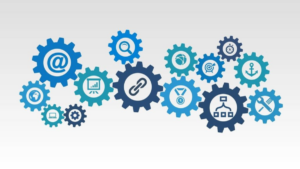Hannah Mirza, founder of the Responsible Marketing Agency, discusses the actions digital media companies can take to make the media planning and buying process more sustainable…
In part one of our conversation, you talked through the industry’s first dedicated action guide towards sustainability goals. How is the Responsible Marketing Agency driving action in this vital area of measurement action.
The Responsible Marketing Agency is a full-service media and marketing consultancy specialising in ESG transformation. We offer businesses advice, enablement and partnership services to help them develop more sustainable business practices. But we also help them measure the impact of the changes they make – something a lot of agencies don’t offer..
The conversation around sustainability and diversity in digital media has been brewing for several years, but for many, starting the journey is quite frankly like finding a needle in a haystack.
I built the Responsible Marketing Agency in response to the need to identify and take actionable and measurable steps towards ESG-driven practice – without compromising campaign performance.
What would you say are the fundamentals of building a sustainable media company?
The starting point has got to be choosing sustainability-assured media partners as part of your media value chain, and then once you’ve done that, optimising creative assets using more sustainable formats. And many companies are starting to do these things.
But there’s always more you can do to improve your sustainability practices. The next big part of the equation is your media planning and buying. At this stage of your ESG transformation, adopting a more innovative and experimental mindset is critical.
For example, you can test your media flighting strategy, and optimise it based on energy use to streamline your data usage. If you use print in your campaigns, you can find sustainability gains there, as well as for OOH campaigns. Lastly, you can also improve your measurement models by including emissions data.
You mentioned ‘optimising your media flighting strategy based on energy use’. Tell us more about that.
As a nation, people use more energy at certain hours of the day compared to others – we call these peak and off-peak times. Also, electricity grids are also powered more by renewable energy than fossil fuels at certain times.
If you can optimise your campaigns and media buying activity during more energy-efficient hours, even the slightest change can impact your overall GHG emissions. You can do this by testing the spread of your peak and off-peak energy usage in your current plans versus that of your target market and identifying whether you can use more of these off-peak or energy-efficient hours without loss of performance.
You also mentioned ‘streamlining your data usage’. How can companies do this?
It’s easy to get overzealous when it comes to targeting, especially with the amount of data available nowadays. Still, you need to weigh up the business imperative for each layer of targeting – for instance location, behavioural, device etc. Are there any layers you can remove for this particular campaign? Are there any overlapping services you can deduplicate? Can you prioritise more sustainable targeting, say, by using wifi over mobile where available?
And as you say, it’s not just about digital/online. What about offline and OOH campaigns?
For print campaigns, there have been many improvements already, for instance publishers using sustainably-sourced paper and PEFC/FSC-certified paper, as well as biodegradable and non-toxic inks and recyclable materials in the printing process. Look for suppliers and print partners that prioritise these practices – that’s an easy win.
It’s a similar story for OOH. When considering the physical structure of a billboard, look for suppliers that choose recycled over raw materials, energy-efficient lighting, and renewable energy sources such as solar powered-roofs. Again, partnering with sustainability-focused suppliers is an easy win for reducing your GHG footprint.
And lastly, how can marketers incorporate emissions data in measurement models?
The most pressing item on the agenda right now is standardising industry metrics. GARM (Global Alliance for Responsible Media) is currently building out a measurement framework with a target launch date of 2024, but now is the time to start thinking about how to incorporate emissions data into existing measurement systems. As such, marketers should request annual emissions reporting from each supplier, and once a unified framework is in place, start to use GHG emissions impact as an additional dimension to performance analysis and better inform media buying decisions.
Responsible Marketing Agency works with clients like Diageo and the WFA to deliver consultation projects focusing on ESG and best practices for sustainable media.








